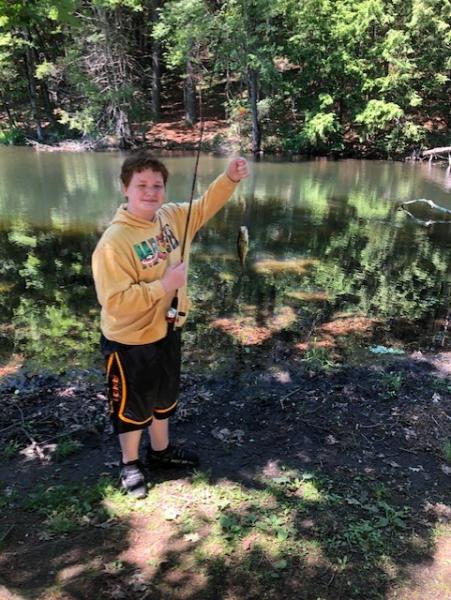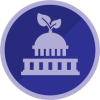School Grounds to Sound

eeBLUE: Watershed Chronicles
This post is written by Abby Peklo, SGS Project Director at EdAdvance.
EdAdvance, the regional educational service center (RESC) in Western Connecticut, is partnering with Ansonia Public Schools to provide a 2-year after-school STEM Watershed Education Program to three 21st CCLC sites called Charger Clubs. After several fits and starts, we successfully began meeting with students in-person during Spring 2021. We spent most of our time outdoors on school grounds and on field trips to do fieldwork along a river, pond, and Long Island Sound. I thought our hands-on approach to seeing and experiencing the flow of water within a watershed really reinforced our messages of one environment and of “What goes on the ground goes in the Sound.”
Prior to our field trips, we engaged students in a few active Project WET activities to help them flex their brains and immerse in the concept of how water flows and the critical importance of water on earth. Simulations that students really enjoyed include Blue Planet, Blue River, and The Incredible Journey. While active and interactive, these simulations were COVID-safe, allowing for masked social distancing with a lot of good chatter. Two real standout components of Year One were: Field Trips and Bottle Cap Blitz. A day prior to their first field trip, students met with Kevin, a local river health advocate who manages a grant-funded summer river cleanup program for urban teens. Kevin challenged students to think more deeply about what goes in their river, how we can all protect aquatic wildlife, and why we need healthy rivers in our communities.

The next day, we took a bus trip from river to pond to Sound to drive home the connection between their local watershed and Long Island Sound, and why what goes on the ground goes in the Sound. Students met with Kevin again along the river a few miles from their school to walk the river path, explore the workings of a human-made dam, discover what was in the riparian buffer, and look upriver and downriver to gain perspective. Everyone hopped back on the bus to spend the second part of the day at a state park upstream of this river. With a newfound perspective, students eagerly conducted water quality testing, explored the forest areas near the river, and did some aquatic netting. In small groups, working alongside professional environmental scientists, they sloshed around in boots, discovered interesting critters, and answered questions about the different indicators of water health. This whetted their appetite to learn how to fish! Fishing turned out to be their favorite activity of the day, except of course for lunch on the beach and swimming in the pond. They cheered when one of their peers caught a fish, and they helped one another untangle fishing lines and bait hooks. The next field trip was a full-day adventure at a state park along Long Island Sound. While they loved pulling on waders, seining, and exploring a live horseshoe crab that washed up on shore, they playfully chanted, “We want to fish!” pretty loudly throughout the day. While on both field trips, students and their teachers stuffed their pockets with bottle caps left behind as litter. This is because, since the beginning of the project, they were engaged in a friendly group-by-group competition to see who could collect the most plastic bottle caps. This stewardship project supported learning about marine debris and plastics ending up in the ocean.

Back at school, at the start of each program day, students emptied their pockets and bags with their bottle cap booty from home. They made piles, weighed their load, patiently counted bottle caps, and graphed their results. To encourage student voice and choice, students decided how to divide themselves into three teams, what to name their teams, and where to scavenge for caps. Most students gathered caps from family and friends and by looking around the streets in their neighborhood. On the last day of the Year One program, they hooped and hollered when they learned how many plastic bottle caps they contributed to SoundWaters’ One Million Bottle Cap Project—an NOAA-funded initiative in Stamford, CT. SoundWaters staff met with students virtually on the final day to thank them for their contribution and to show them how their teams and contributions would appear on their website.
The NOAA Office of Education and NAAEE partnered to increase environmental and science literacy among NOAA’s partners and external networks. In this five-year partnership supported by the U.S. Department of Education, NOAA and NAAEE worked together to provide enriching after-school watershed-related STEM (science, technology, engineering, and mathematics) projects through NOAA-21st Century Community Learning Centers Watershed STEM Education Partnership grants. These grants supported programming for a total of 100 local 21st Century Community Learning Centers (21st CCLC) sites and their students. The 30 selected projects served 18 states, ranging from Alaska to Florida.


